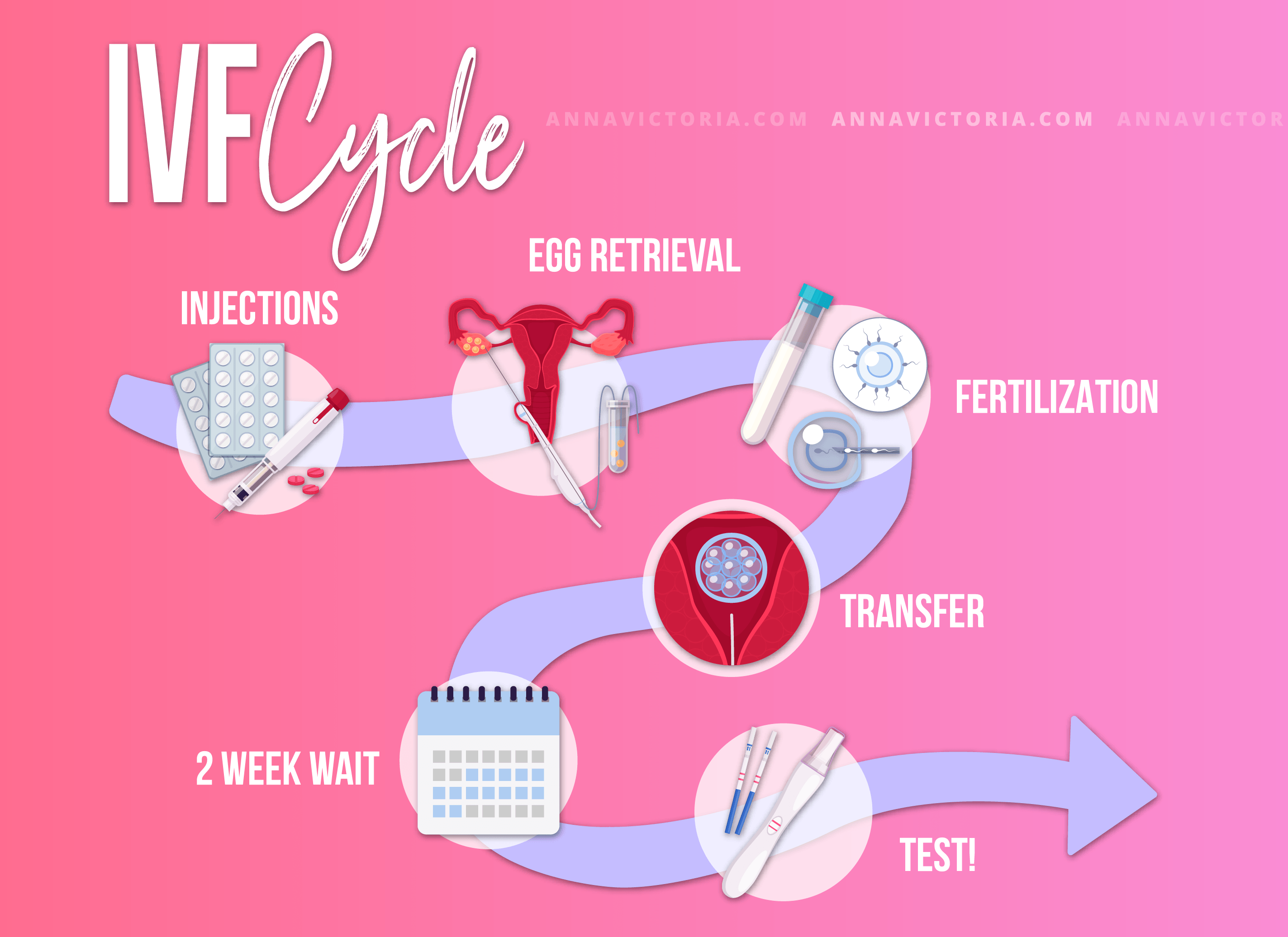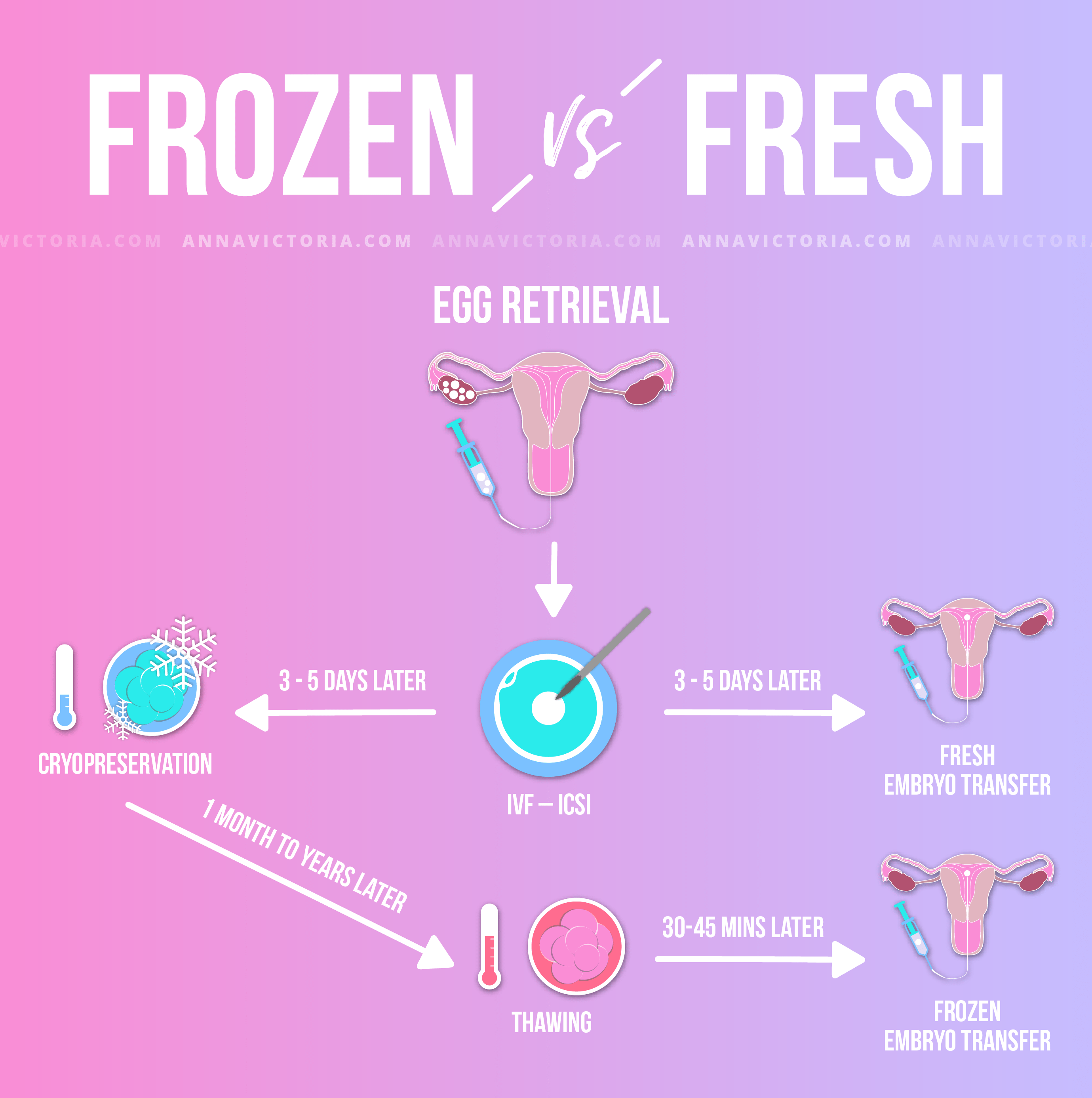My IVF Experience
by Anna Victoria in Lifestyle
I am very excited for this blog – it’s one that I have been waiting to be able to share because it’s all about my IVF journey. And before I get into injections and appointments and everything, I first want to give you a quick overview of what IVF is because I’ve been getting a lot of questions like, “Why are you doing IVF?” and “Why do you need these injections?”

The short answer is that my husband Luca and I have been trying to conceive for 21 months now and after 12 months of not conceiving, we went to a fertility clinic. I go to the Southern California Reproductive Center (SCRC) in LA and that’s where we began doing fertility treatments. I did 2 IUIs (intrauterine insemination), both were medicated and neither of them were successful. We decided to take a break and “not try” and, if we weren’t successful conceiving by July 2019, we were going to try IVF. So that is where we are today!
TRY THE FIT BODY APP FREE FOR 7 DAYS! DOWNLOAD NOW.
What is IVF?

IVF stands for in vitro fertilization. At the beginning of your cycle (day 1 of your period), you start with a certain number of eggs, let’s say 20 (though this number varies depending on the woman). Throughout the month, one of those eggs (typically only 1) grows to be the biggest and most viable, often referred to as the “golden egg,” and you ovulate that egg. Now in the case of IVF, instead of just one egg, they are trying to get as many viable eggs as possible. This means they want to grow all 20 (or however many you start with) to be as big as they can and then take them out in what is called an “egg retrieval.” After the egg retrieval, the eggs and sperm are mixed in the lab to help with fertilization and then they put one or more fertilized eggs directly into the uterus. You then have to wait 2 weeks to find out if an embryo has implanted itself in the uterus lining and a pregnancy has occured.
Fresh vs Frozen Transfer

There are 2 different kinds of IVF cycles: fresh and frozen. I am going to be doing a frozen cycle which means they retrieve the eggs, fertilize them, then freeze them. This allows us to choose when we want to do the transfer, and it also allows us to have genetic testing (PGS) done on each egg.
A fresh transfer is when they retrieve the eggs, fertilize them, then transfer one (or multiple) back to you within 3-5 days. Genetic testing cannot be done during a fresh transfer cycle since the fertilized embryo is transferred right away and the genetic testing process takes 1-2 weeks.
Statistically, frozen transfers have higher success rates. Doctors believe that this is because after an egg retrieval, your body has such abnormally high levels of certain hormones that it wouldn’t have from naturally conceiving, and therefore doing a frozen transfer allows for your hormone levels to go back down to normal. A frozen transfer also allows your body to recover from an egg retrieval which is an invasive, painful process depending on how many eggs you have retrieved. The more eggs retrieved, the more pain you’re typically in.
With that being said, I have heard of many, many successful frozen transfers! Whether someone should do a fresh or frozen transfer should be discussed and decided between the patient and their medical team.
View this post on Instagram
Personally, I am still at the very beginning of a long road but I’m so grateful to have finally made it this far. I have been waiting for 21 months to get even this close to the finish line, so there is a light at the end of the tunnel! Step 1 of that process is my “stim cycle” to prepare me for the egg retrieval. A stim cycle is the schedule of all the injections, blood work, and the ultrasounds I will be doing over the following two weeks in order to grow as many of my eggies to be as big as they possibly can be!
If you’re interested in reading more about the injection process and stim cycle, click here to read my next blog post about this next step in our IVF journey!


